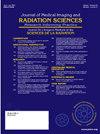Does size matter? Weight bias, stigma, and medical radiation technology practice in Canada
IF 1.3
Q3 RADIOLOGY, NUCLEAR MEDICINE & MEDICAL IMAGING
Journal of Medical Imaging and Radiation Sciences
Pub Date : 2025-03-16
DOI:10.1016/j.jmir.2025.101886
引用次数: 0
Abstract
Introduction
Although biases are a natural part of the human experience, left unchecked, they can lead to considerable harm in the context of healthcare. Weight Bias and Stigma (WBS) is a pervasive bias rooted in the negative attitudes and perceptions of individuals in large bodies. WBS can result in poor health outcomes of large-bodied patients due to weight distraction, delaying or avoiding seeking care, and the presumption of non-compliance. As high-volume carers, Medical Radiation Technologists (MRTs)/Radiographers are a central pillar in the healthcare system; responsible for caring for a multitude of patient populations. The purpose of this study was to explore MRTs perceptions and attitudes regarding large-bodied patients, and to identify subsequent practice implications and areas for improvement.
Method
The study included ten practicing MRTs with a range of clinical experience from hospitals across Ontario, Canada. Data were collected using semi-structured interviews (pilot tested) conducted in person and online and analyzed using Braun and Clark's approach to thematic analysis.
Results
Four main themes were identified by analyzing the interview responses including hospital resources, patient care, attitudes and perspectives, and education for future practice. Deficit language and responses provided evidence of WBS not only in the sample population but also within hospitals across Ontario, Canada, as revealed by recounts of stories and comments made by other healthcare professionals. Evidence of empathy and advocacy for large-bodied patients was also found.
Conclusion
WBS influences the provision of care in medical radiation sciences. This study found both implicit and explicit WBS, as well as demonstrations of empathy and compassion for large-bodied patients. The emergent themes identified in this study demonstrate the need for improvement in hospital resources and equipment, as well as improvements in education and training of MRTs and other healthcare professionals working with large-bodied patients.
大小重要吗?加拿大的体重偏见、病耻感和医疗放射技术实践
虽然偏见是人类经验的一个自然组成部分,但如果不加以控制,它们可能会在医疗保健领域造成相当大的伤害。体重偏见和耻辱(WBS)是一种普遍存在的偏见,根植于对体型较大的个体的负面态度和看法。由于体重分散,延迟或避免就医,以及不遵守的推定,WBS可能导致体型较大的患者健康状况不佳。作为大量的护理人员,医疗放射技师(MRTs)/放射技师是医疗保健系统的核心支柱;负责照顾大量的病人群体。本研究的目的是探讨磁共振成像对体型较大的患者的看法和态度,并确定后续的实践意义和需要改进的领域。方法本研究包括来自加拿大安大略省各医院的10位具有临床经验的mrt执业医师。数据通过面对面和在线进行的半结构化访谈(试点测试)收集,并使用Braun和Clark的主题分析方法进行分析。结果通过对访谈结果的分析,确定了四个主要主题,包括医院资源、患者护理、态度和观点以及对未来实践的教育。语言和反应的缺陷不仅在样本人群中,而且在加拿大安大略省的医院中也提供了WBS的证据,正如其他医疗保健专业人员所述的故事和评论所揭示的那样。研究还发现了同情和支持大块头患者的证据。结论wbs影响医疗放射学的护理提供。这项研究发现了内隐和外显的WBS,以及对大块头病人的同情和同情。本研究中确定的紧急主题表明需要改进医院资源和设备,以及改进对mrt和其他与体型较大的患者一起工作的医疗保健专业人员的教育和培训。
本文章由计算机程序翻译,如有差异,请以英文原文为准。
求助全文
约1分钟内获得全文
求助全文
来源期刊

Journal of Medical Imaging and Radiation Sciences
RADIOLOGY, NUCLEAR MEDICINE & MEDICAL IMAGING-
CiteScore
2.30
自引率
11.10%
发文量
231
审稿时长
53 days
期刊介绍:
Journal of Medical Imaging and Radiation Sciences is the official peer-reviewed journal of the Canadian Association of Medical Radiation Technologists. This journal is published four times a year and is circulated to approximately 11,000 medical radiation technologists, libraries and radiology departments throughout Canada, the United States and overseas. The Journal publishes articles on recent research, new technology and techniques, professional practices, technologists viewpoints as well as relevant book reviews.
 求助内容:
求助内容: 应助结果提醒方式:
应助结果提醒方式:


